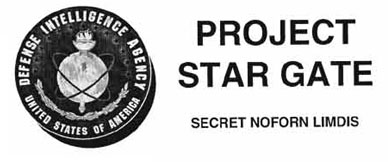Remote viewing - Star Gate document - DIA - Grill Flame report Oct 1983
This Historic remote viewing document is:
GRILL FLAME PROJECT REPORT
Defense Intelligence Agency
Directorate for Scientific and Technical Intelligence
19 OCTOBER 1983
CLASSIFIED BY: DIA/DT-5A
Produced for DIA in October 1983 as a report on the progress to date. It includes very interesting notes including details about the CRV training using the key SRI viewer at the time (Ingo Swann) as the baseline. This document shows that;
A. Ingo Swann was himself the primary CRV viewer and that he did use and train in CRV ( a fact that has been disputed in the past)
B. his accuracy after CRV training massively increased.
This document also shows examples of Ingo's CRV work both in practice and in operational remote viewing work with analysis of the data.
Key highlights from the document are:
"PREFACE:
This report summarizes results of the three-year GRILL FLAME project, which terminated at the close of FY 1983. -It contains key findings from the various project activities, and identifies potential follow-on efforts.
In addition to this DIA evaluation, the GRILL FLAME project also has been reviewed by an independent Scientific Evaluation Team that met in August and September of 1983. The scientific evaluation and recommendations will be forwarded separately"
"FINDINGS:
1. SUMMARY (U)
Key findings of the GRILL FLAME project are:
- Remote viewing is a real phenomenon, and is not degraded by distance or shielding.
- Remote viewing ability can be improved by appropriate training procedures.
- Remote viewing has potential for US intelligence applicacations. However, at this stage of development, descriptive content (e.g., sketches, configurations) is more reliable than analytic content (e.g., function, complex technical data).
- A potential threat to US national security exists from foreign achievements in psychoenergetics. In the USSR and in China, this research is well funded and receives high-level government backing.
(S/NOFORN/DRCON) Achievements of the GRILL FLAME project include development of remote viewing training methods, the development of statistical Methods for evaluating remote viewing data, and the compilation of an extensive data base on foreign psychoe-nergetics research. Methods for improving the reliability of remote viewing data, through detailed understanding of the remote viewing process, and through identification of techniques for isolating valid from spurious data also were achieved. Training techniques that show promise for enhancing the reliability of the analytical content of remote 'viewing data also were identified."
"(S/NOFORN/ORCON) The accuracy of the descriptions was assessed on the basis of the accuracy rating scale shown in Table
1. Results indicate that viewer performance improved through training. Prior to training, only 22 percent of the viewer responses from 100 tests were in the good to excellent category. After training, 66 percent of the data from 95 tests were rated as good to excellent. A statistical analysis of the first four and the last four tests from the after-training series was also performed to see if data quality at the end of this series was better than data quality at the begining.
Using the concept analysis technique discused in the appendix II, the correct site was identified in three of these last four tests. A similar approach yielded one correct match (chance level) for the first four tests. This result, along with the over all 66 percent accuracy level, indicates that the training procedures were effective and that data quality improvements were achieved over time."
"c. Intelligence Potential
...The major emphasis of the GRILL FLAME project, however, was to develop a training method that would increase the accuracy of the remote viewing data and establish that it is a transferable skill. When this project was begun, Army INSCOM had already established an in-house unit and had been producing data on operational sites since 1979. The Army INSCOM viewers have detected the remote site successfully in 50 percent of their projects (89 sites)."
"...To determine whether progress in RV training carried over to operational tasking, the most advanced viewer at SRI was at various times'targeted on sites of operational significance throughout the program to find out if he could collect information of intelligence value. This viewer was given IS operational targets. Using the accuracy rating scale defined in Table I, intelligence analysts assigned ratings of good to excellent to approximately 40 percent of--the RV responses. The effect of the RV training procedures can be seen in the data from this series. The accuracy rating average for the last five targets was 2.2 on the three-point scale;;the average from the first five (before training) was 1.4.
A statistical analysis of the last five operational tests from this series also was performed. A person who did not know which set of RV data corresponded to the correct target was able to correctly match the data with the appropriate target site for all of these five tests. The probability of this result occurring by chance is less than one in a hundred. This statistical result provides additional support for the validity of RV under operational conditions."
"...Overall results between the SRI viewer and the INSCOM viewers were consistent (40 percent and 50 percent accuracy levels). These results clearly indicate that the RV phenomenon has intelligence application potential, especially where configurational aspects of RV data can be of value. However improvement in RV data reliability for both configurational and analytical content is still required before application of RV data to intelligence tasks can become routine.
...Keeping these faictors in mind, one nonetheless finds that data generated by remote viewers are often of high quality and, provided they are appropriately integrated into the intelligence data mix, can be of significant utility. Examples of successful remote viewings are given in appendix IV."
Eight martinis - A FREE remote viewing magazine can be downloaded here:






